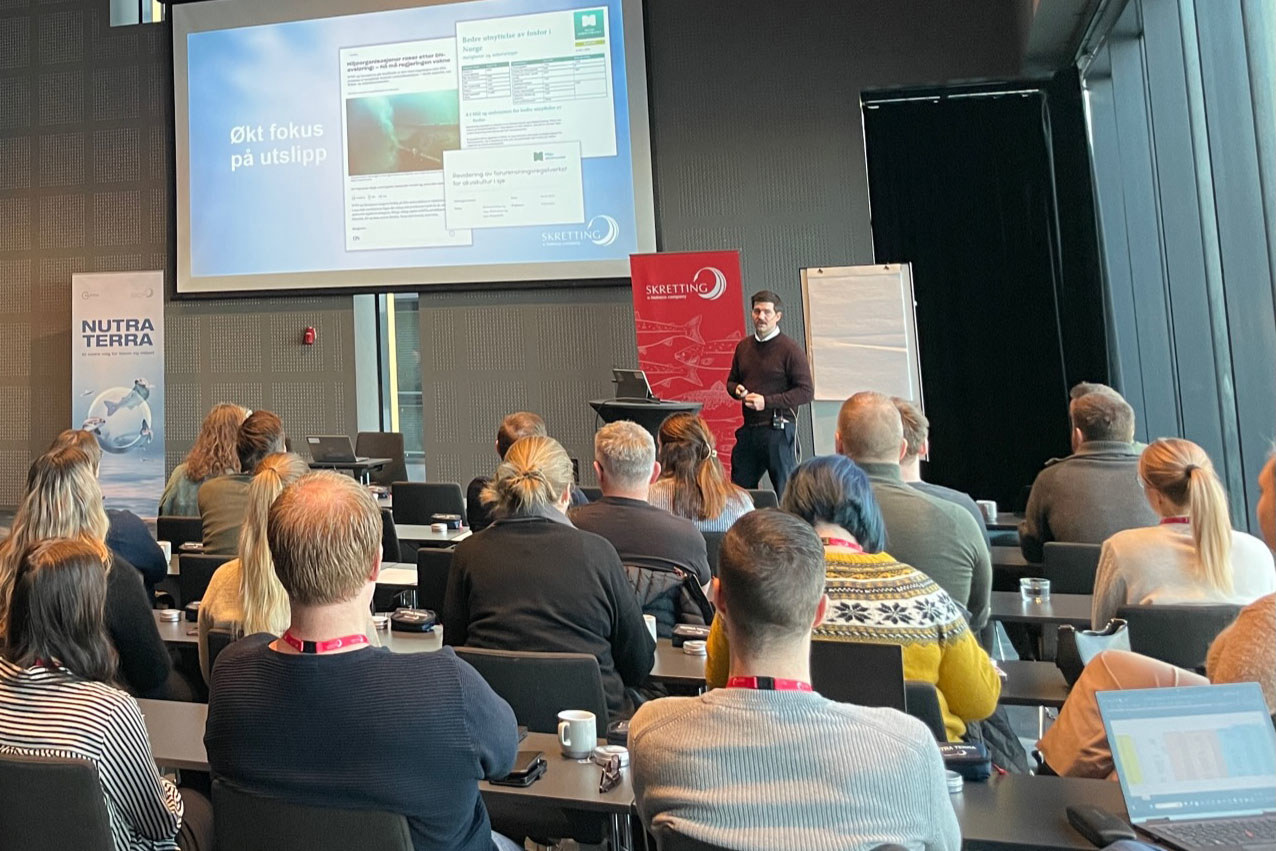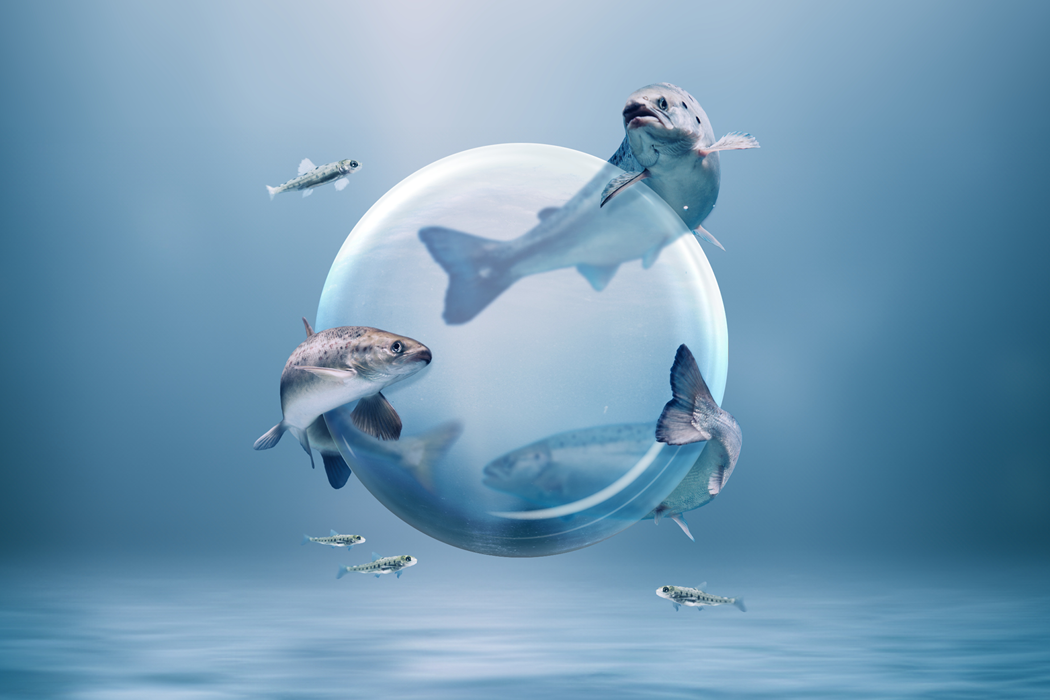We are proud to introduce Nutra Terra, a novelty in hatchery feed with documented high performance and reduced emissions. Trials show a reduction in emissions of phosphorus and zinc from faeces of up to 30%, while fish fed with Nutra Terra have significantly better growth and a lower feed conversion ratio.
New generation of hatchery feed – better resource utilisation and lower emissions

Nutra Terra represents our largest innovation in grower feed for juvenile fish in over a decade. All available knowledge and research have been gathered to develop a new and optimised feed recipe. The result is a feed that provides better performance, while reducing emissions from the fish and making better use of raw materials in the feed.
Raw materials are key
We believe that the key to success lies in raw materials. Nutra Terra contains smaller amounts of limited raw materials such as fishmeal and phosphorus compared to conventional hatchery feeds. Part of the fishmeal is replaced with insect protein, which is part of the natural diet of salmon in the wild during this life stage.
"Validation trials show a 7% increase in growth and 4% lower feed factor in fish fed with Nutra Terra. It is gratifying to see such good performance numbers while reducing the need for limited raw materials," says Marcus Søyland, Head of Land Based in Skretting Norway.
Trials show that the fish absorb more phosphorus and as much zinc with Nutra Terra, despite the fact that the feed contains less of these minerals. A pleasant effect of this is that less phosphorus and zinc are excreted in the faeces.

Lower emissions of phosphorus and zinc
Increased use of new feed raw materials and optimising existing raw materials help ensure sustainable growth in the aquaculture industry. One of the major changes in Nutra Terra's feed prescription is the enzyme phytase, which makes phosphorus and zinc in plant raw materials more accessible to the fish. This makes it possible to reduce the total amount of phosphorus and zinc added to the feed.
"Trials show that the fish absorb more phosphorus and as much zinc with Nutra Terra, despite the fact that the feed contains less of these minerals. A pleasant effect of this is that less phosphorus and zinc are excreted in the faeces. In trials, we have seen that emissions of phosphorus and zinc are reduced by 30% in fish fed with Nutra Terra ," says Søyland.
Focus on fish welfare
Deformities are a well-known challenge in the aquaculture industry, and phosphorus plays an important role in the development of fish skeletons.
"In Nutra Terra trials, we have analysed the spine of the fish to look at mineralisation and deformities. The results show that fish fed with Nutra Terra accumulate more phosphorus in the spine, which is positive for bone development," Søyland explains.
A contribution to better sludge quality
The sludge from hatcheries can potentially be used to produce fertiliser. In order for sludge to be used as fertiliser, it must meet quality criteria set out in the fertiliser regulations. The amount of zinc is central to the grading of the sludge. Trials document that fish fed with Nutra Terra utilise zinc more efficiently, and the amount of zinc in faeces is reduced.
"Reduced zinc emissions open up new and more valuable uses for the sludge from land-based production facilities. In some fjords, phosphorus emissions can limit production, and the reduction in phosphorus emissions can give our customers new opportunities for increased production," Søyland concludes.
